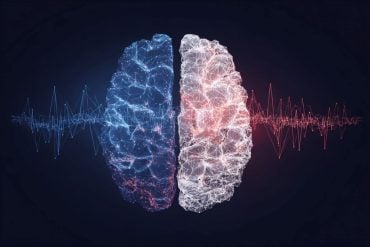Summary: Paracetamol (acetaminophen) doesn’t just work in the brain—it also shuts off pain at its source in the peripheral nerves. The study found that after taking paracetamol, the body produces a compound called AM404 directly in pain-sensing nerve endings.
This compound blocks sodium channels responsible for transmitting pain, stopping the signal before it reaches the brain. These findings rewrite our understanding of how this common drug works and could lead to more targeted, side-effect-free pain relief in the future.
Key Facts:
- Peripheral Action: AM404, produced from paracetamol, blocks sodium channels in pain-sensing nerves.
- New Mechanism: Challenges the belief that paracetamol only acts in the brain and spinal cord.
- Therapeutic Potential: May lead to safer, more precise alternatives to current local anesthetics.
Source: Hebrew University of Jerusalem
A breakthrough study from the Hebrew University of Jerusalem, published this week in the prestigious journal PNAS (Proceedings of the National Academy of Sciences USA), reveals a previously unknown peripheral mechanism by which paracetamol (also known as acetaminophen, Tylenol®, or Panadol®) relieves pain.
The study was led by Prof. Alexander Binshtok from the Hebrew University’s Faculty of Medicine and Center for Brain Sciences (ELSC) and Prof. Avi Priel from its School of Pharmacy. Together, they uncovered a surprising new way that paracetamol—one of the world’s most common painkillers—actually works.
Credit: Neuroscience News
For decades, scientists believed that paracetamol relieved pain by working only in the brain and spinal cord. But this new research, published in PNAS, shows that the drug also works outside the brain, in the nerves that first detect pain.
Their discovery centers on a substance called AM404, which the body makes after taking paracetamol. The team found that AM404 is produced right in the pain-sensing nerve endings—and that it works by shutting off specific channels (called sodium channels) that help transmit pain signals. By blocking these channels, AM404 stops the pain message before it even starts.
“This is the first time we’ve shown that AM404 works directly on the nerves outside the brain,” said Prof. Binshtok. “It changes our entire understanding of how paracetamol fights pain.”
This breakthrough could also lead to new types of painkillers. Because AM404 targets only the nerves that carry pain, it may avoid the numbness, muscle weakness, and side effects that come with traditional local anesthetics.

“If we can develop new drugs based on AM404, we might finally have pain treatments that are highly effective but also safer and more precise,” added Prof. Priel.
About this neuropharmacology research news
Author: Danae Marx
Source: Hebrew University of Jerusalem
Contact: Danae Marx – Hebrew University of Jerusalem
Image: The image is credited to Neuroscience News
Original Research: Closed access.
“The analgesic paracetamol metabolite AM404 acts peripherally to directly inhibit sodium channels” by Alexander Binshtok et al. PNAS
Abstract
The analgesic paracetamol metabolite AM404 acts peripherally to directly inhibit sodium channels
Paracetamol has been used for decades to relieve mild-to-moderate pain. Its analgesic effect is mainly attributed to its metabolite, AM404, acting on cannabinoid receptors or TRPV1 channels in central nervous system (CNS) neurons.
Here, we show that AM404 is produced by primary sensory neurons.
It inhibits sodium current in nociceptor neurons, blocking action potential (AP) generation and reducing nocifensive behavior in naïve and inflamed rats.
We demonstrated that this analgesic effect of AM404 is mediated by its direct inhibition of nociceptive voltage-gated sodium channels (NaV) 1.8 and 1.7 via the local anesthetic binding site.
The NaV1.8 and 1.7 inhibition was specific for AM404 and not observed with other metabolites of paracetamol.
Our findings suggest that the analgesic effect of paracetamol is mediated mainly by direct AM404-induced inhibition of nociceptive sodium channels at the peripheral nociceptor neurons.
Our findings lay a foundation for the potential development of AM404 as a selective local analgesic.






